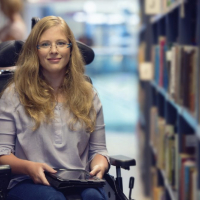
Steven Williams, Communications Manager at the National Institute for Health Research (NIHR) Dissemination Centre, blogs about the recently launched ‘My Signals’, in which health and social care staff and service users describe research that is important for them.
How would you respond to the same information if it was told to you by Hilary Mantel, Donald Trump or Gary Lineker?
In our age of information overload, the messenger can be as important as the message. Our friends, family, colleagues and the people we admire become the filter through which we receive, interpret and validate information. This is increasingly the case as more and more of us receive our news and opinion through social media, leading to the phenomenon of ‘filter bubbles’ – online tribes segmented by ‘if you like that, you’ll love this’ computer algorithms.
We respond differently to information depending on who is telling it to us. A trusted friend, respected colleague, a leading expert or even someone with a shared experience, is likely to elicit a different response compared with an unknown entity. This has something to do with whether we perceive the person talking to us to be trustworthy, informed and understanding of our own perspective. Are they being authentic? Can they be trusted? Do they know what they are talking about? Do they understand my experience and how this relates to me?

We respond differently to information depending on who is telling it to us
At the National Institute for Health Research (NIHR) Dissemination Centre, we are trying to put good research evidence at the heart of decision making in the NHS, public health and social care. This ambitious task encompasses a broad range of decisions, made at various levels, and, crucially, by a number of different people. To do this, we engage with patient groups, frontline clinicians, commissioners, local authorities and others to provide them with research evidence they can use.
Part of this challenge is conveying information in an easily digestible format. We are working to the achieve this through our most regular output NIHR Signals – summaries of the latest important research coming out of the NIHR and other reliable evidence sources.
The other part of the puzzle is building a reputation for the NIHR Dissemination Centre as a ‘go to’ source of reliable, useful evidence. As part of the National Institute for Health Research, we hope to be perceived as trustworthy and well informed – and this is a reputation we work hard to bolser and preserve, but perhaps the harder question is how our audiences can relate to us? And how can we fully understand each of our audiences sufficiently to relate to them?
We are able to involve our audiences to some extent in the selection of which research abstracts turn into Signals through our rating process, but we wanted to involve our audiences further in the active dissemination of Signals.
My Signals
It’s with this in mind that we’ve launched My Signals. In My Signals, health and social care staff and service users describe what research is important to them and why they feel others in their ‘tribe’ need to know about it.
The contributors select a handful of research studies from our collection of over 350 NIHR Signals (with more added each week). They explain why they chose those Signals and how the findings could be used to inform decisions in their work, their practice, their care.
By doing this, our audiences get to hear about research evidence not from just from an academic expert but from people they can relate to. These people see the research and understand it in a similar way to their peers, who we are hoping to reach. These curators also highlight some of the challenges and barriers readers may face when trying to put the research into practice. In short, they can put the research into context and explain the implications in a way that we as research experts and communicators cannot.
The Patient Collection
Our first My Signals collection is available online now, and has been compiled by a group of patients and carers. These are people who have been involved in research as public contributors, offering a patient voice to the design and delivery of trials and studies and the sharing of research evidence.
Our four patient contributors quickly found Signals that they could relate to. Some found new evidence about their own health conditions or those of loved ones. Others spotted Signals that covered areas of interest to them – relevant to patient groups they had been involved with or supported. They found these Signals were informative, interesting and, above all, usable.
Where next?
We are currently working on a number of other My Signals collections that will be released later in the year. They will focus on research relating to public health, general practice and surgery, all compiled by those working in the field.
We’re excited to see what research they choose, how it might influence the decisions they make and how their experience will resonate with their professional tribes.
It’s not just our curators who we want to see selecting the research that matters to them. We are asking Twitter users to share Signals that have interested, excited or surprised them, using #MySignals. If you use Twitter, please take a look through our Signals and share a piece of research that resonates with you.
Join in the conversation on Twitter with @NIHR_DC and @CochraneUK #MySignals or leave a comment on the blog.
Steven Williams has nothing to disclose.
